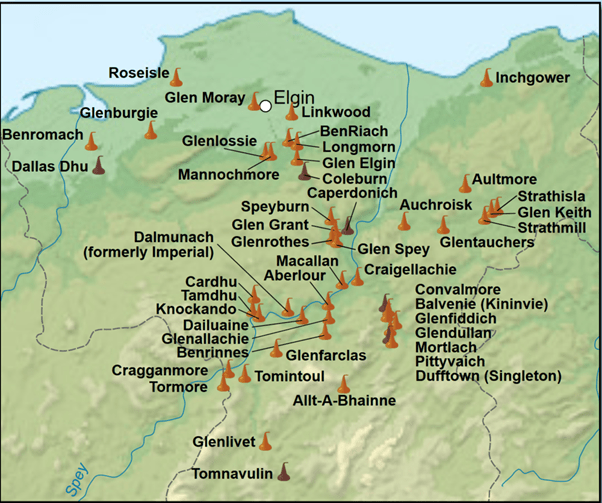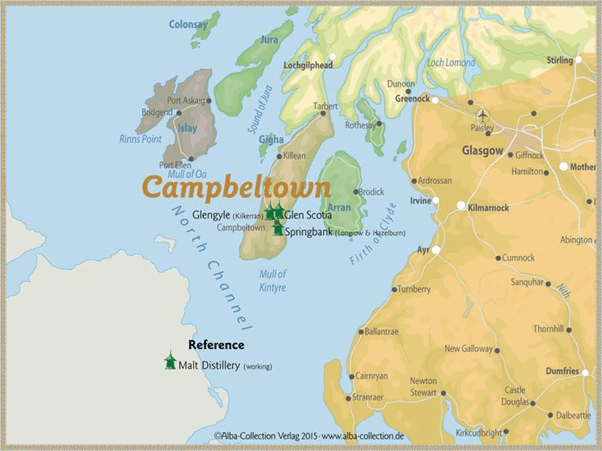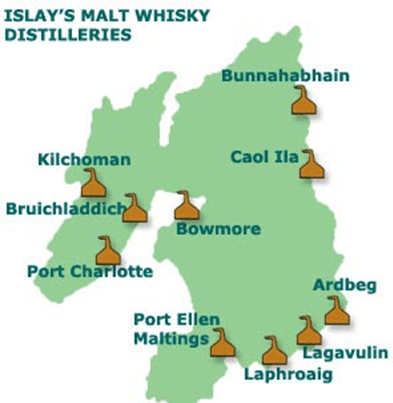Home to the most elegant and inspired whiskies in Scotland, Speyside is also home to the most distilleries in the Country, some of which include Aberlour, The Balvenie, Cardhu, Cragganmore, Glenfarclas, Glenfiddich, Glenglassaugh, The Glenlivet, Glen Moray and The Macallan.
The largest amount of Scotch production from the highest number of distilleries comes from Speyside, in the northeast of the country. Despite not being too large of an area, this is where around 50% of all Scotch is produced. Speyside’s product comes from the 50 distilleries, over half of the country’s total number of Scotch producers.
Due to the sheer volume of distilleries, there’s a huge amount of difference in the character of Speyside Scotch, from lighter grassy numbers, to the sweeter, richer, sherried type. The single malts from the area are notable for their refined smokiness and complexity. Johnnie Walker, one of the world’s more popular Scotch brands, originates from here.




